“Layering” can be confusing. One of the most common questions asked between a group of snowboarders in the morning whilst getting ready is “what are you wearing today?”. No matter how much snowboarding you have done, this is still the most tricky and puzzling decision one faces. I’m sure even the top pros are confronted with this challenge?! Trouble is, the conditions and temperatures can vary so much in the mountain, what could be a winning combination one day layer-wise, could be a total error the next.
Not only can mother nature be inconsistent, but other “variants” can throw confusion into the mix: your natural body temperature, the type of snowboarding you are doing, where you are going, altitude, who you are snowboarding with, do you wear protection (not that sort)…
There is a simple equation for successful layering to follow; a light base layer, a warm and insulating mid-layer, then a waterproof/ windproof top layer. Then you can add/subtract to these depending on the “variants”.
Here is my rough guide to how to layer appropriately for snowboarding so you stay the optimum temperature and have the maximum fun.
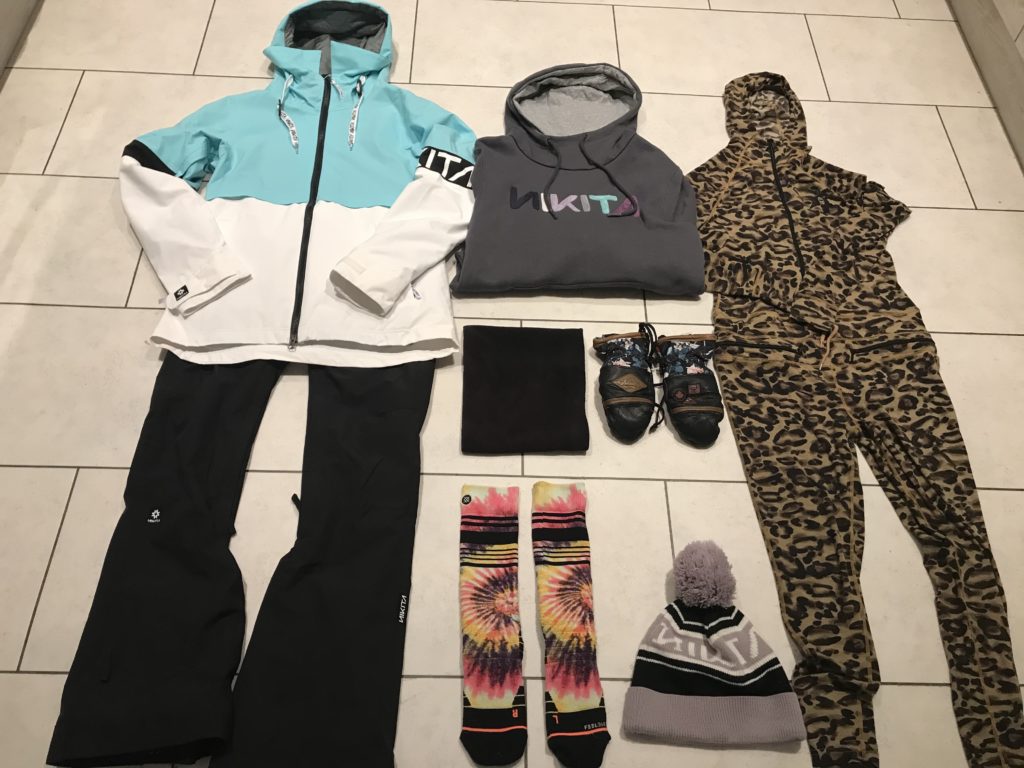
Base Layer
This is the layer you wear next to your skin. Yes, you can still wear underwear! The main aim of a base layer is to wick away any moisture your body generates whilst snowboarding as this will keep your body warm. A synthetic material (like Nylon or Polyester) is good at doing this, but try to avoid cotton as this traps moisture so you will feel cold whilst wearing it. The best material to buy for a base layer is something wool-based, for example, Merino Wool. This will keep you really warm but also wick moisture away very efficiently. A wool-based base layer won’t get too smelly either.
The base layer should fit snugly to your body but not be too tight and restricting. Most would opt for a pair of leggings/ long johns and then a long-sleeved thermal top. You can normally buy a matching set of these. Or, what’s very popular these days, is an all-in-one thermal onesie. These are great as they mean that snow doesn’t creep into the gap between your top and bottoms. Don’t worry, they have a zip around your middle so you can still go to the toilet with ease! A high-quality base layer is important so it is worth spending a little more on this layer. Don’t forget a good pair of thermal socks.
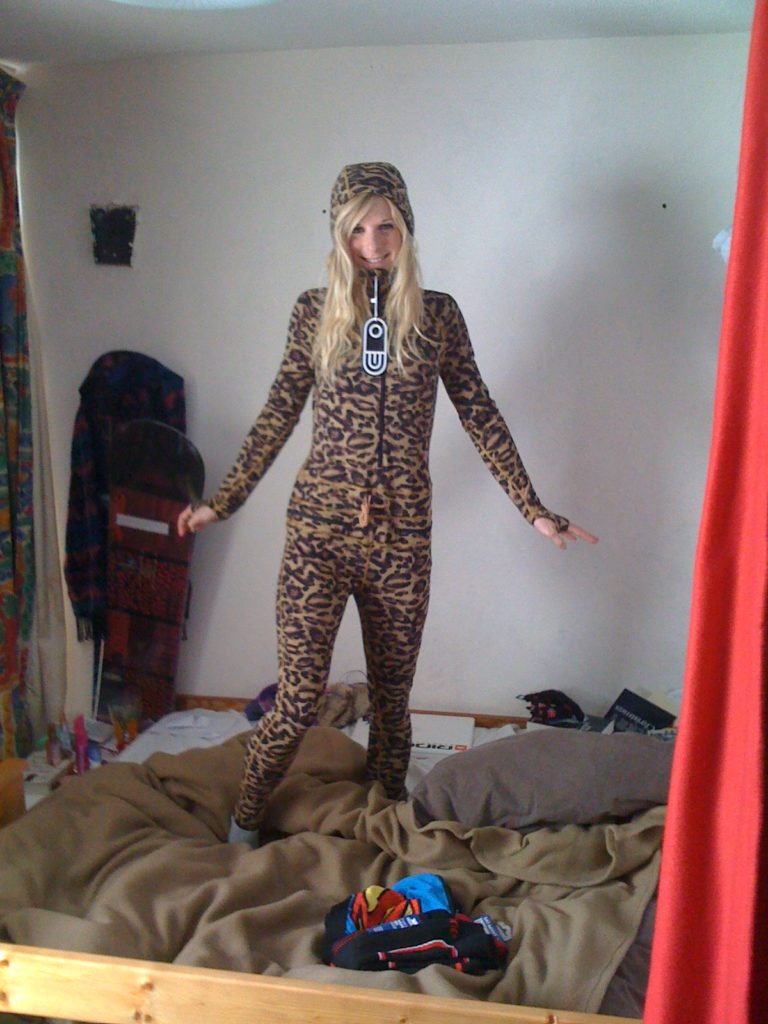
Mid Layer
The mid-layer is your main insulating layer. A good mid layer will keep heat trapped next to your body. Snowboarders/ skiers normally skip a mid-layer on the legs as your legs will naturally stay warm whilst riding anyway. For the top, a long-sleeved layer that’s not too bulky but nice and warm would tick all the boxes. Snowboarder’s favourites are a fleece, a thin down jacket or a merino wool jumper.
Down jackets are probably the warmest for the colder days/places and these puffy little jackets compact quite small if you need to shove a mid-layer in your backpack. Try and buy a natural or synthetic down jacket as these are the best. Look for one that has “water-resistant insulation “with it, to save a soggy mid-layer. The good thing about mid layers is you can add an extra one on really cold days, and ditch it all together on really hot days. Some snowboard jackets even come with a mid-layer attached to them to give you easy layer variations.
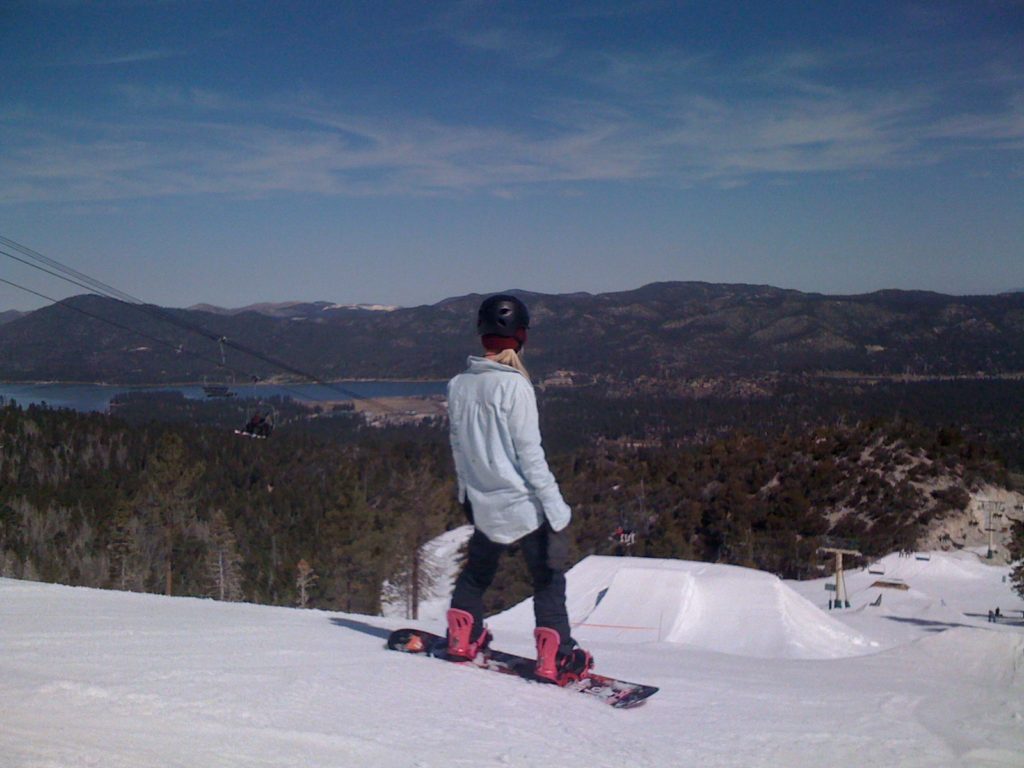
Top Layer
The creme-de-la-creme, the layer that everyone sees! So, you will need a snowboard jacket and some snowboard pants……a onesie if you are feeling fruity! The top layer needs to be waterproof, windproof and breathable. Its main aim is to keep the elements on the mountain from getting in, but allow sweat and moisture to get out. On the label of each outerwear item, there should be a waterproof/ breathability rating. The higher this is, the better the jacket/pant is.
Today, a lot of ski/ snowboard outerwear is made with Gore-Tex. This is top of the pile for tech. If you get your layering right, there is often no need to get a super thick, insulated jacket. A shell will do! If you do feel the cold, or going somewhere really cold, a top-layer with insulation too is a good idea. But just be careful you don’t have so many bulky layers that you can’t actually move.
Make sure the jacket and pants you get have vents in, these are great when you get a little hot and need to let some air in. Outwear with lots of pockets and added functions like wrist/ feel gaiters, I-pod pockets, lift pass sleeve, goggle wipe toggle, etc are useful. Jackets that attach to pants and/ or have a snow skirt are excellent for keeping the snow out. Alternatively, “bib pants” are very 2020 and mean you don’t get snow down your pants! Brrrrrrrrrrrrr!! Don’t forget a warm pair of gloves/ mittens for your hands.
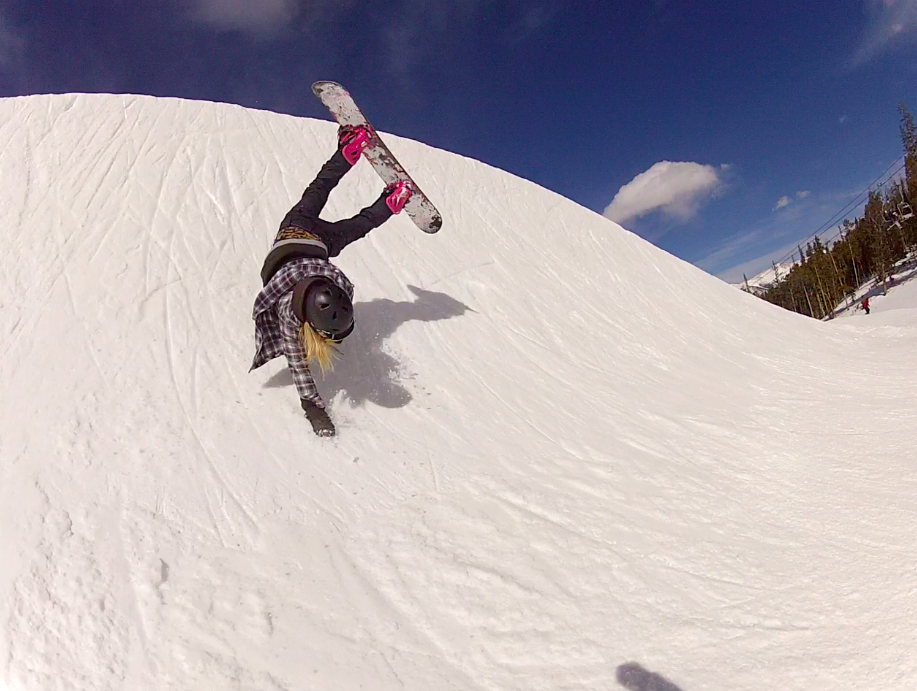
The Variants
So many things can throw a spanner in the works to mess up the above “layering equation”…..
Are you a hot/ cold person? Some snowboarders may naturally run a bit hot, and some feel the cold more. You will need to adapt your layers accordingly. Perhaps add a mid-layer if you run cold, subtract a mid-layer if you run hot.
Where are you going?
Are you going to be shredding somewhere hot or cold? For example, resorts in California can get really warm and snowboarders often just ride in hoodies. Interior resorts in Canada can get COLD, like so cold you can’t even take your hand out of your glove to take a photo because of frostbite danger. Do some research into temperatures before you go and adjust your layers to suit. NB: higher altitude resorts tend to be colder.
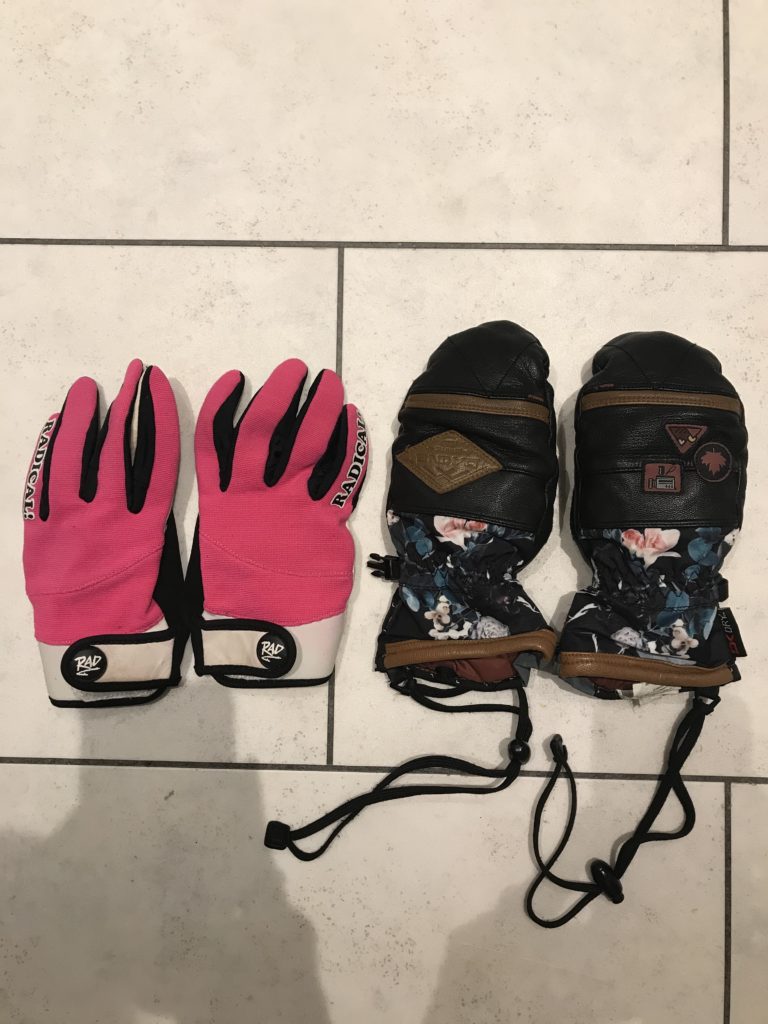
When are you going?
Mid-winter snowboarding is a lot colder than spring riding. Also, spring riding can be a bit “wetter”, so definitely make sure you check your waterproof rating on your outerwear.
What sort of snowboarding will you be doing?
If you are going to be lapping a park and hiking rails etc. layers that you can ditch are key, as you will get hot. If you are backcountry hiking or touring, the same applies. You will get hot hiking up, but will cool down at the top, so layers that you can take off/ put on are the best. If you are all-mountain cruising, warmer layers are better as you will spend more time sitting down on lifts to get around the mountain.
What time of day will you be snowboarding?
Early morning and late afternoon are the coldest on the mountain, whereas mid-day/ early arvos are a lot warmer. If you are “Night Riding”, that is colder again, so make sure you add an extra layer or 4 (!!) if you are venturing out after dark.
What level are you?
I remember getting the hottest snowboarding whilst I was learning. In the beginning, you fall over a lot, get stuck in weird positions, walk a lot and generally use a lot of energy. It can be pretty full-on and leave you a little stressed and sweaty, so if it’s your first time, you be under the illusion that you will need loads of high-tech layers for the nursery slope. When you get a bit better, you (hopefully) won’t fall over as much and you’ll be able to venture higher up the mountain. This is when you will need warmer layers.
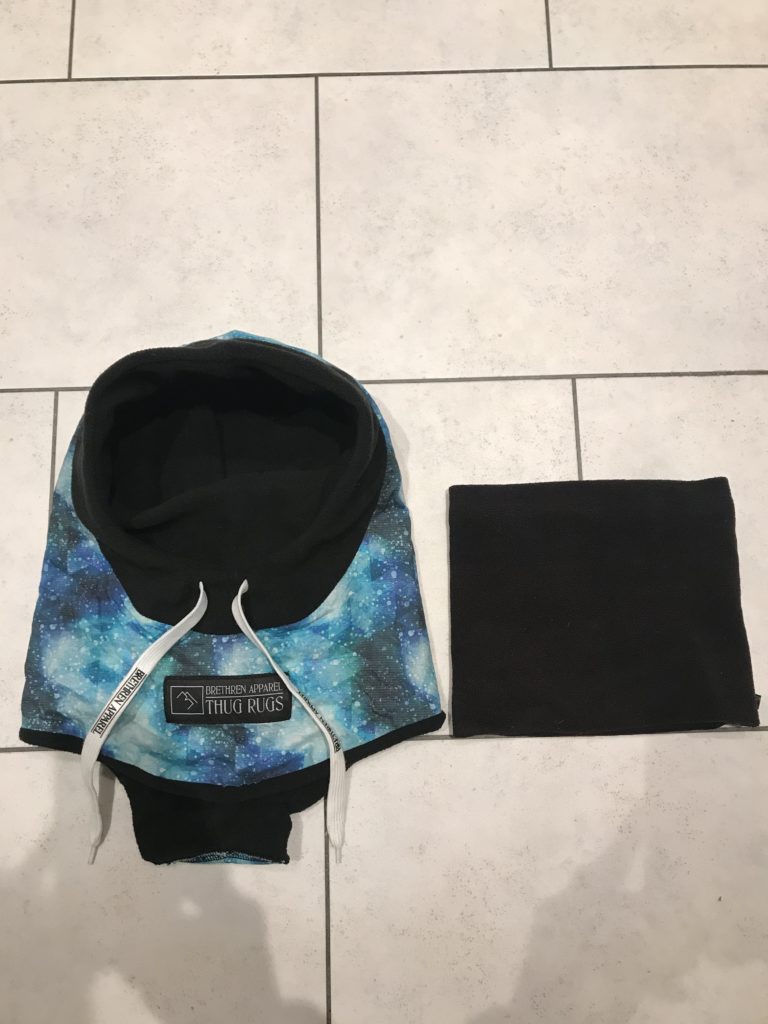
Are you wearing body protection?
This is protective cushioning material to protect you from knocks and bumps whilst snowboarding. But this essentially adds another layer to your outfit. Make sure the body protection you get is breathable and comfortable to wear and not too bulky. Wear it over your base layer and underneath a mid-layer. You maybe even want to use the body protection as a mid-layer in itself.
Who are you snowboarding with?
If you are with a crew who wants to hot-foot-it around the mountain, barely stopping for air, fewer layers will be better as you will get hot trying to keep up. If you are with a group who wants to take it at a more leisurely pace, maybe even stop (a few times) for a coffee, wear warmer layers. If you are snowboarding with kids, fewer layers will be better as you will be running around after them and most likely carrying extra skis/poles/boards/coats/gloves/snacks as well as all your own gear! But make sure you also take (packhorse!!) a backpack with extra layers for them!
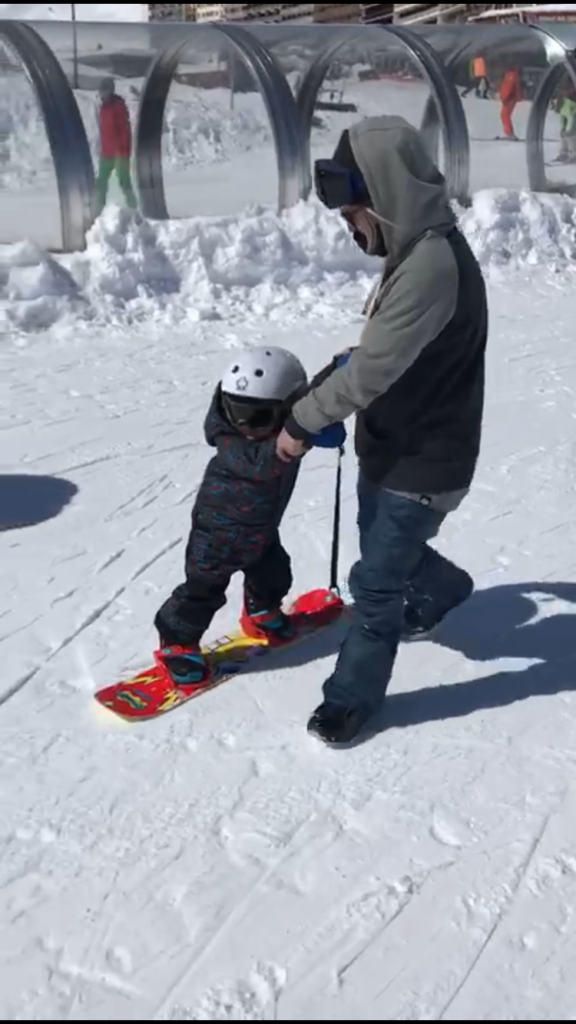
Top Tips
Take lightweight extra layers in a backpack, that way you can easily add/ ditch a layer
Add a liner to your gloves/ mittens if you get especially cold hands. Alternatively, you can just wear liners or pipe gloves if you get very hot hands or in the spring.
Snowboard mittens are thought to be warmer than gloves as keeping your fingers together generates more warmth between them.